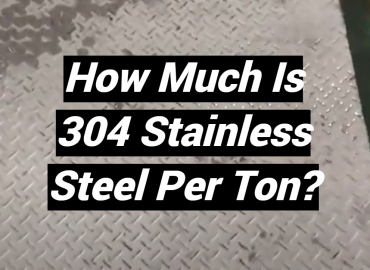It’s not always easy to tell if something is stainless steel. In fact, a lot of people don’t even know how to do it! In this blog post, we will teach you how to determine if a material is stainless steel. We’ll also discuss some common features of stainless steel so that you can spot it more easily in the future. So, whether you’re a homeowner looking to fix a leaky faucet or a business owner in need of some new stainless steel appliances, read on for all the information you need!
What Is Stainless Steel?
Stainless steel is a mixture of iron, chromium, and nickel. It is also known as “inox steel” or “corrosion-resistant steel.” Stainless steel does not stain, corrode, or rust easily.
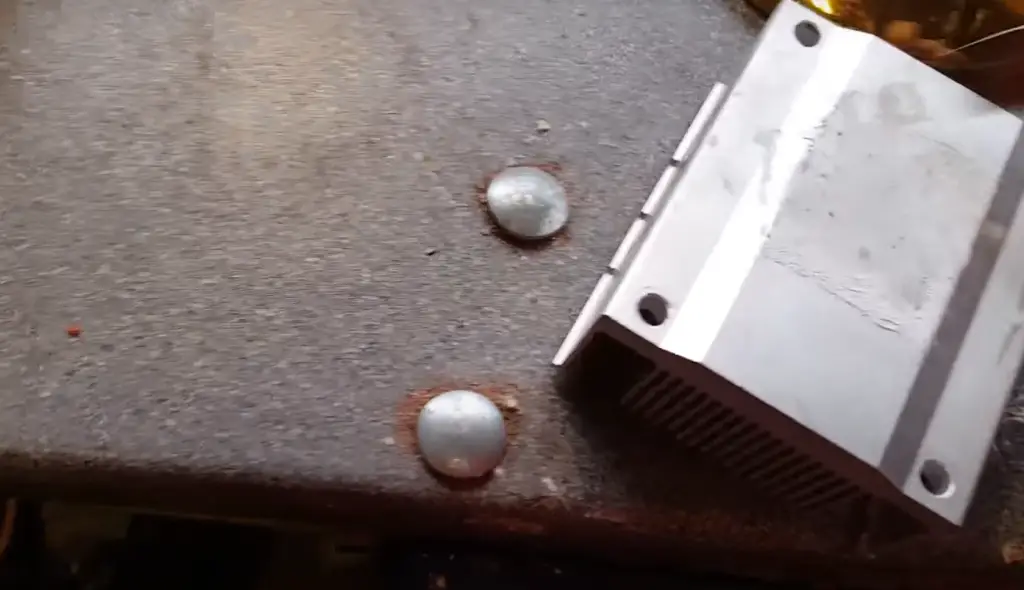
There are different grades and surface finishes of stainless steel. The two most common grades are 304 and 316. The difference between these two grades is that 316 stainless steel contains molybdenum, while 304 does not. Molybdenum gives 316 stainless steel better corrosion resistance in certain chemicals and environments.
Both 304 and 316 stainless steels are non-magnetic. However, other grades of stainless steel may be magnetic (e.g., 430). [1]
Ways to Tell If Something Is Stainless Steel
Identification by Color
Stainless steel is available in a variety of finishes. No matter the finish, stainless steel will always have a dull gray color to it. If you see something with a bright, shiny surface, it’s not stainless steel.
Identification with a Magnet
The easiest way to check if something is stainless steel is by using a magnet. If the object is attracted to the magnet, then it is not stainless steel. If the object is not attracted to the magnet, then it may be stainless steel.
Identification with Copper Sulfate Test
Approach the object in question with a small container of copper sulfate solution and a cotton swab. Dip the cotton swab in the solution and then touch it to the surface of the object. If a blue-green color develops on the object’s surface, it is likely stainless steel. If no color change occurs, the object is likely not stainless steel.
Grinding Test
Another way to identify stainless steel is to perform a grinding test. Take a piece of ordinary carbon steel (or an object that is not stainless steel) and grind it on the surface of the stainless steel object in question. If the carbon steel leaves a black streak, the object is most likely stainless steel. If no black streak is left behind, the object is not likely stainless steel.
Annealing Method
The annealing method is a more definitive way to identify stainless steel.
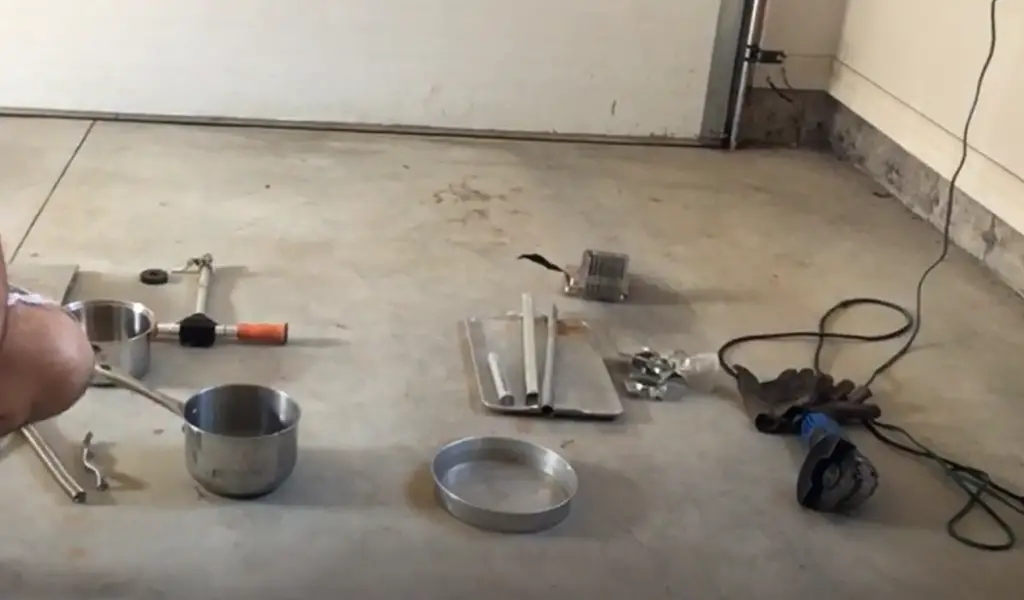
To perform this test, first heat the object in question with a torch until it is red-hot. Then plunge it into a container of cold water. If the object cracks or shatters, it is not stainless steel. If the object does not crack or shatter, it is most likely made of stainless steel.[2]
Chemical Qualitative Identification
If you have access to a spectrochemical analyzer, you can use this device to identify the elemental composition of the object in question. If the object contains more than 10.5% chromium, it is likely stainless steel.
X-Ray Diffraction Analysis
If you have access to an x-ray diffractometer, you can use this device to identify the crystalline structure of the object in question. Stainless steel typically has a Face-centered cubic (FCC) crystal structure, while carbon steel typically has a Body-centered cubic (BCC) crystal structure. As such, if the object in question has an FCC crystal structure, it is likely stainless steel.
Hardness check process by scratching or filing
Scratching or filing test is one of the most useful and popularly used tests to check the hardness of any object. As we know, stainless steel is a hard metal so it will be difficult to scratch or file it. So, if you find that the object is difficult to scratch or file, then there is a good chance that it is made up of stainless steel.
Check the number label
If you find a number label on the object, then it can be helpful in identifying whether the object is stainless steel or not.
These numbers represent the composition of the metal and can give you a good indication of whether the object is stainless steel or not.Chip the metal to determine the color of the metal
This is another easy test that you can do to determine if an object is made up of stainless steel or not. All you need to do is take a hammer and hit the object firmly to create a small chip on its surface. Once you have created a small chip, observe the color of the metal. If the metal is silver in color, then there is a good chance that it is made up of stainless steel.
Weight matters
Stainless steel is a heavy metal so if you pick up an object and it feels heavier than you expect, then there is a good chance that it is made of stainless steel.
Muriatic acid test
This is a test that should be used as a last resort since it can damage the object in question. To perform this test, you will need to mix one part muriatic acid with three parts water. Next, take a cotton swab and dip it in the solution. Then touch the cotton swab to the surface of the object. If the object turns black, then it is likely made of stainless steel.
What Are The Benefits of Stainless Steel?
Some of these benefits include:
- Stainless steel is one of the most durable materials available. It can withstand high temperatures and repeated use without showing signs of wear.
- Stainless steel is also resistant to rust and corrosion. This makes it a good choice for products that will be exposed to harsh conditions.
- Stainless steel is easy to clean and disinfect. This makes it a good choice for items that come into contact with food or other substances that need to be kept clean.
- Stainless steel has a long lifespan, which means it will not need to be replaced as often as other materials.
- Stainless steel is recyclable, so it can be reused or melted down and made into new products.
What Are The Cons of Stainless Steel?
Some of the disadvantages of stainless steel include:
- Stainless steel can be more expensive than other materials.
- Stainless steel is a hard material, so it can be difficult to work with.
- Stainless steel may show fingerprints or smudges more easily than other materials.
- Stainless steel can be noisy when used in certain applications.
How to Choose a Stainless Steel Appliance?
There are many different types of stainless steel, each with its own unique composition and characteristics. So, how do you know if something is truly stainless steel? Here are a few tips:
- Check the label or manufacturer’s website. Many manufacturers will clearly label products that are made of stainless steel.
- Look for a “stainless steel” stamp on the product. This stamp indicates that the product is made of stainless steel and can usually be found on the bottom or back of the item.
- Examine the surface of the item. Stainless steel should have a smooth, shiny surface with no rust or corrosion visible.
- Perform a magnet test. Place a strong magnet on the surface of the item in question. If the magnet sticks, then the item is not made of stainless steel.
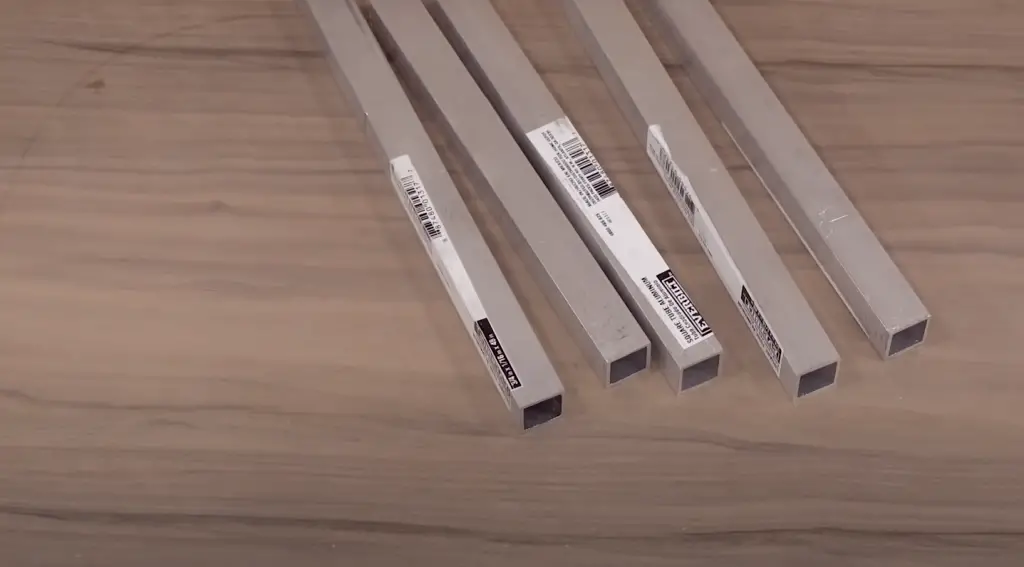
Keep these tips in mind the next time you need to determine whether something is made of stainless steel! [3]
How to Clean Stainless Steel?
Cleaning stainless steel is easy, but you have to be careful not to damage the finish. Here are some tips on how to clean stainless steel:
- Use a soft cloth or sponge and mild detergent.
- Avoid using abrasive cleaners or scrubbers, which can scratch the surface.
- Rinse with clean water and dry with a soft cloth.
- If there are stubborn stains, you can use white vinegar or lemon juice mixed with water. Just apply it to the stain and wipe away.
- You can also buy special cleaners made specifically for stainless steel. Follow the instructions on the label carefully. [4]
How to Store Stainless Steel Items?
It is important to store stainless steel items properly to prevent them from rusting or staining.
Here are some tips on how to store stainless steel items:
- Wipe the item clean with a soft, dry cloth before storing.
- Store the item in a cool, dry place away from direct sunlight or heat.
- Do not store the item next to other metals, as this can cause it to tarnish.
- If you must stack stainless steel items, use a piece of felt or fabric in between each item to prevent scratching.
- Be sure to wrap any sharp edges with tape before storing.
- When storing stainless steel flatware, keep it in a lined drawer or container to prevent tarnishing.
- If you are storing stainless steel cookware, line it with a clean towel to prevent scratching.
How to Remove Rust from Stainless Steel?
Stainless steel is an alloy of iron, chromium, and nickel. It is extremely durable and resists corrosion and rust. However, if stainless steel becomes scratched or chipped, it can begin to rust.
If you have a piece of stainless steel that is beginning to rust, there are a few things you can do to remove the rust and prevent it from coming back.
One way to remove rust is to scrub the affected area with a toothbrush dipped in vinegar. You can also try using a commercial rust remover specifically designed for use on stainless steel.
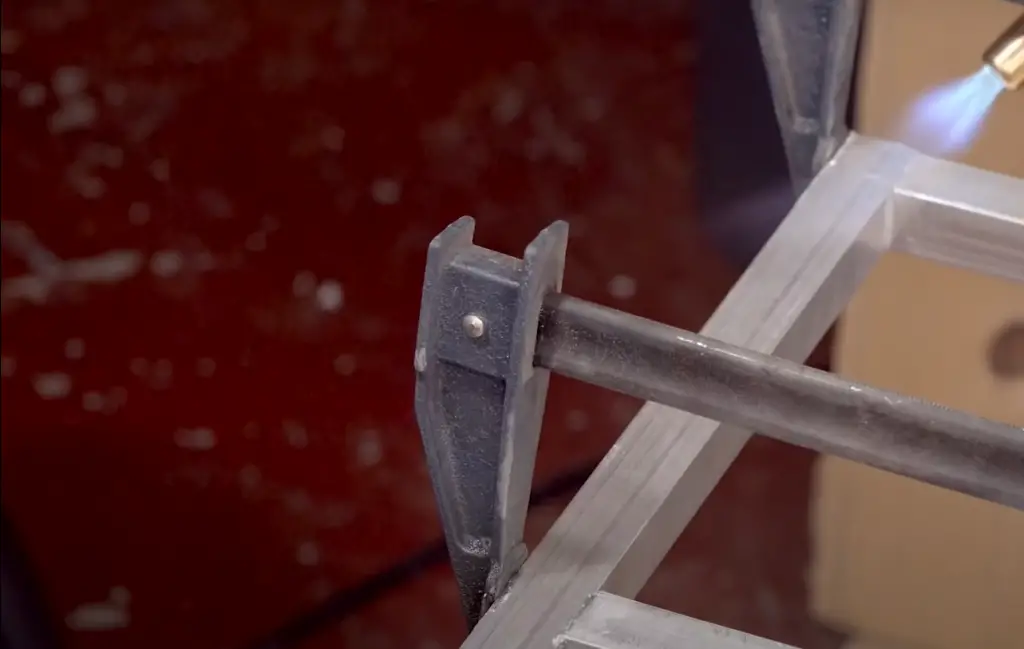
Once you have removed the rust, be sure to rinse the area well and dry it completely. You may also want to apply a thin layer of olive oil or other food-safe oil to help protect the stainless steel from rusting in the future. [5]
Things That Hurt Stainless Steel
Stainless steel is an incredibly strong and durable material, however there are still things that can damage it. Some of the things that can hurt stainless steel include:
- Abrasive cleaners – Abrasive cleaners can scratch the surface of stainless steel and make it more susceptible to rusting. If you must use an abrasive cleaner on stainless steel, be sure to rinse it thoroughly afterwards to remove any residue.
- Chemicals – Certain chemicals can damage the finish on stainless steel or cause it to rust. Common culprits include chlorine, bleach, and acids. If you spill any of these substances on stainless steel, be sure to clean it off immediately.
- Heat – Exposure to high temperatures can cause stainless steel to discolor or warp. If you plan on using stainless steel cookware, be sure to use it on low or moderate heat settings.
- Sharp objects – Bumps and scrapes from sharp objects can damage the surface of stainless steel and make it more susceptible to rusting. To protect your stainless steel surfaces, be sure to use coasters, trivets, or placemats when placing anything on them.
- Tough stains – Tough stains can be difficult to remove from stainless steel without damaging the surface. If you have a tough stain that you can’t remove with regular cleaning products, try using a paste made from baking soda and water. Apply the paste to the stain and let it sit for a few minutes before scrubbing it gently with a soft cloth. Rinse the area afterwards and dry it with a clean towel.
How to Prevent Water Spots on Stainless Steel?
Water spots on stainless steel can be a nuisance, but there are a few ways to prevent them. One way is to avoid using harsh cleaners or abrasives on the surface. Another is to dry the surface immediately after it comes into contact with water. Finally, you can apply a coat of wax or polish to the stainless steel to create a barrier that will repel water and help prevent spotting.
Can You Sublimate Onto Steel?
Yes, you can sublimate onto steel! The key is to make sure that the steel is properly coated so that the sublimation inks will adhere. We recommend using Subli-Metal flakes for this purpose. The flakes create a nice even coating on the steel and help the inks to transfer evenly.
To sublimate onto steel, you will need:
- Steel surface
- Subli-Metal flakes
- Sublimation inks
- Heat press or oven
- Teflon sheet or silicone mat
Instructions:
- Make sure your steel surface is clean and free of any grease or oils. If it is not clean, the sublimation inks will not adhere properly.
- Apply a thin layer of Subli-Metal flakes to the surface. You can use a paint brush or roller for this. Make sure the flakes are evenly distributed and that there are no clumps.
- Place your Teflon sheet or silicone mat over the flakes. This will prevent them from shifting when you transfer your image.
- Print your image in reverse onto sublimation paper using sublimation inks.
- Place the paper face-down onto the steel surface. If you are using a heat press, set it to 400 degrees Fahrenheit (204 degrees Celsius). If you are using an oven, preheat it to the same temperature.
- Place the steel surface with the image onto the heat press or oven and wait 3-5 minutes.
- Remove the steel surface from the heat press or oven and allow it to cool.
- Peel away the Teflon sheet or silicone mat to reveal your transferred image! [6]
Alternatives to Stainless Steel
There are a few alternatives to stainless steel that have similar properties and can be used in many of the same applications. These include:
- Titanium
- Zirconium
- Niobium
- Hastelloy
- Inconel
- Monel
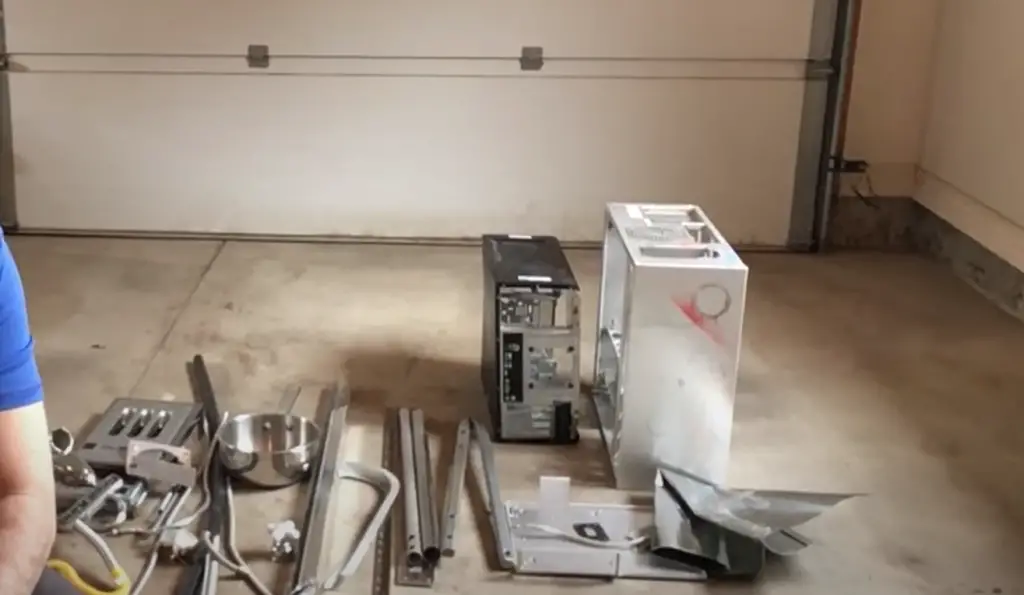
While these materials are more expensive than stainless steel, they offer superior resistance to corrosion in some cases. Titanium, for example, is nearly as strong as steel but much lighter and more corrosion resistant. Zirconium has a similar resistance to corrosion but is also non-toxic, making it ideal for use in food processing equipment.
Inconel and monel are both resistant to corrosion from salt water.So, if you need something that is resistant to corrosion but not necessarily stainless steel, one of these materials may be a good choice.
FAQ
How can you tell if it is stainless steel?
There are a few ways to tell if something is made of stainless steel. One way is to look for a magnet. If the item is attracted to a magnet, it is not made of stainless steel. Another way to tell if something is made of stainless steel is by looking for a reaction when you apply nitric acid to the surface. If the surface turns yellow, it is not made of stainless steel. If you’re still not sure, you can always consult a professional.
Does a magnet stick to stainless steel?
No, a magnet will not stick to stainless steel. Stainless steel is a type of steel that contains chromium, which makes it resistant to rust and corrosion.
How can you tell if it’s stainless steel or aluminum?
It’s easy! All you need is a magnet. If the item is attracted to the magnet, it’s made of steel. If it’s not attracted to the magnet, it’s probably aluminum.If you’re not sure whether an item is stainless steel or aluminum, there are a few other ways to tell.
First, look at the color. Aluminum is usually silver, while stainless steel can be any color, including silver. Second, check the weight. Stainless steel is generally heavier than aluminum. Finally, try rubbing the surface of the metal with a piece of cloth. If it leaves a black mark, it’s probably stainless steel; if it doesn’t, it’s probably aluminum.
How do you tell stainless steel from mild?
The easiest way to tell stainless steel from mild is by the magnet test. If it’s attracted to a magnet, it’s made of steel. If it’s not attracted to a magnet, it’s probably aluminum. Another way to tell them apart is by color. Stainless steel is usually silver, while aluminum is usually any color, including silver. Finally, you can try rubbing the surface of the metal with a piece of cloth. If it leaves a black mark, it’s probably stainless steel; if it doesn’t, it’s probably aluminum.
Can stainless steel rust?
Yes, stainless steel can rust. However, it is much more resistant to rusting than other types of steel. The reason stainless steel doesn’t rust as easily is because it contains chromium. This element forms a thin layer of oxide on the surface of the metal that protects it from oxygen and moisture.
How do you clean stainless steel?
There are a few different ways to clean stainless steel. One way is to use a mild soap and water. Another way is to use a vinegar and water solution. Finally, you can use a commercial stainless steel cleaner.
What are the benefits of stainless steel?
Some of the benefits of stainless steel include its durability, resistance to corrosion, and low maintenance costs. Stainless steel is also a very versatile material that can be used in a wide variety of applications.
How can you tell if something is stainless steel or galvanized?
There are a few key ways to tell. First, check to see if the item in question is magnetic. If it is not, then it is likely stainless steel. If it is magnetic, then it is most likely galvanized. You can also tell by looking at the surface of the metal. Stainless steel will have a bright, smooth finish, while galvanized will have a duller finish. Finally, you can test for chromium content.
First, clean the area of the metal you want to test with alcohol. Then, place a drop of nitric acid on the metal. If the area turns yellow, green, or blue, then it contains chromium and is stainless steel. If the area turns black, then it does not contain chromium and is galvanized. Stainless steel is an alloy of iron, carbon, and chromium. It is also known as “inox steel” or “chromium steel.” Galvanized steel is simply steel that has been coated with zinc to prevent rusting. This process is called “hot-dip galvanizing.”
Useful Video: How to recognize Real from Fake Stainless Steel?
Conclusion
Now that you know the three main ways to tell if something is stainless steel, put your new knowledge to the test. The next time you see a metal object, try to determine if it is stainless steel. If you’re still unsure, consult a professional or ask someone who is familiar with metals. With a little practice, you’ll be able to quickly and easily identify stainless steel. Thanks for reading!
References:
- https://www.thyssenkrupp-materials.co.uk/stainless-steel-composition.html
- https://midcityscrap.com/2013/03/learn-to-identify-and-scrap-stainless-steel/
- https://www.familyhandyman.com/article/pros-and-cons-of-stainless-steel-appliances/
- https://www.maids.com/blog/cleaning-stainless-steel/
- https://home.howstuffworks.com/home-improvement/household-hints-tips/cleaning-organizing/how-to-get-rust-off-stainless-steel.htm
- https://batikinstitute.com/can-you-sublimate-on-stainless-steel/






